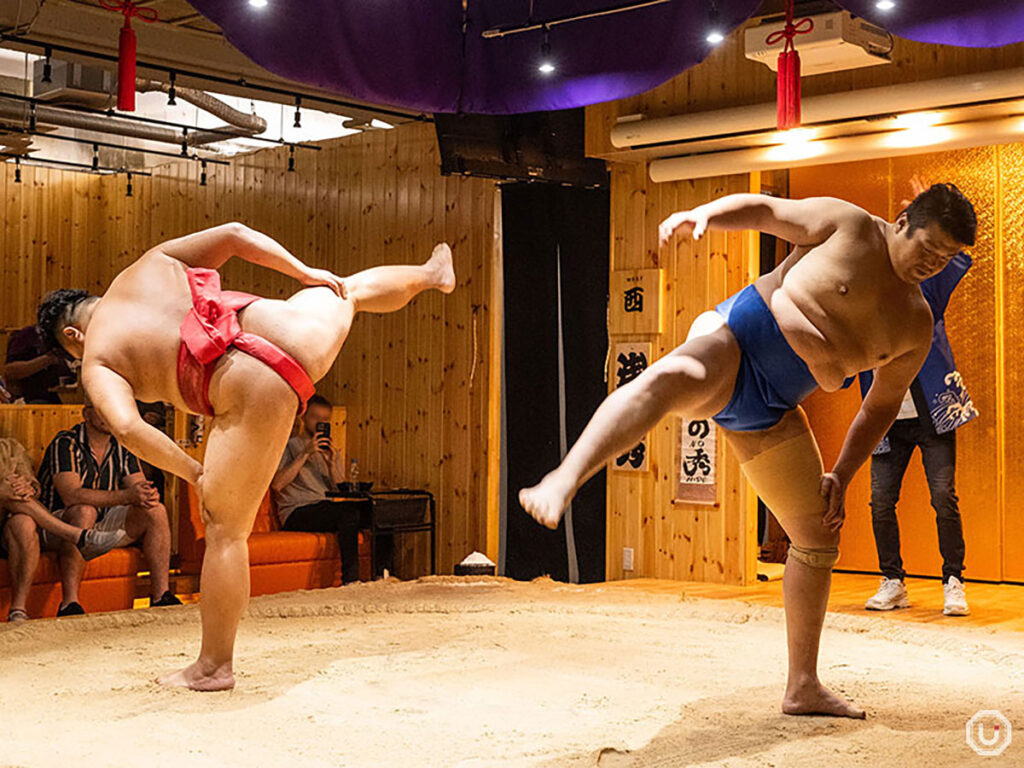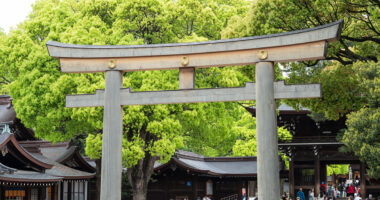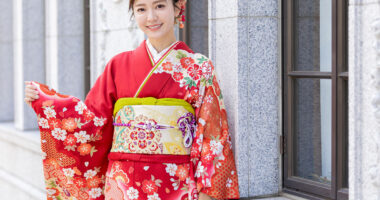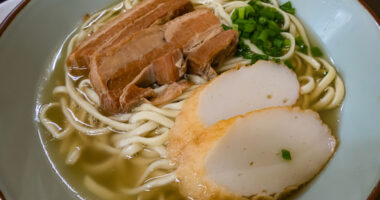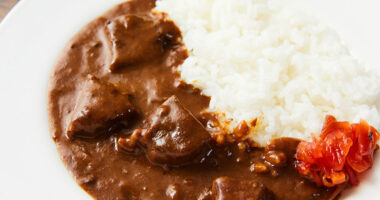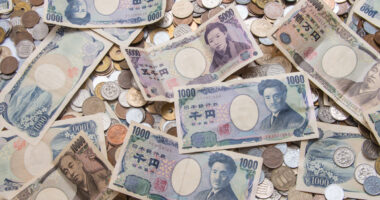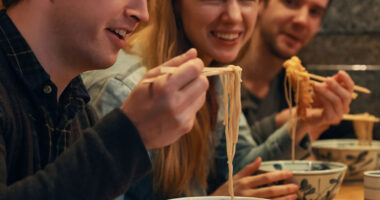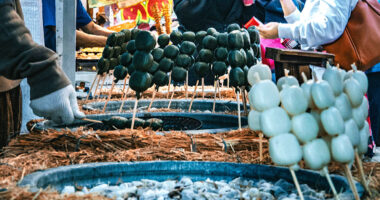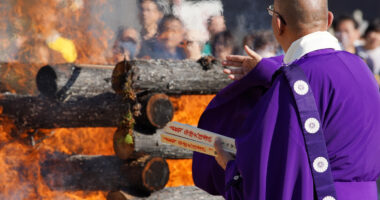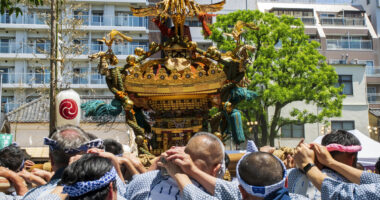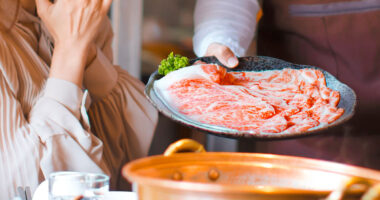Chanko nabe is a nutritious hot pot dish born from Japan’s traditional sumo wrestling culture.
It developed as a daily meal to support the physical conditioning of sumo wrestlers and is now enjoyed at many specialty restaurants, particularly in Tokyo’s Ryōgoku area. This hearty hot pot, brimming with meat, seafood, and vegetables, is visually striking and cherished as a dish that embodies the strength of sumo. This article explores the history, characteristics, deep connection to sumo, tips for delicious eating, and recommended restaurants for chanko nabe.
Japanese hot pot dishes extend far beyond chanko nabe. For those interested in learning more about the types and selection of Japanese hot pot dishes, please refer to this article.
Chanko nabe: Definition and characteristics
Chanko nabe is a traditional Japanese hot pot dish renowned as the signature meal of sumo wrestlers.
Strictly speaking, the term chanko refers to all meals eaten by sumo wrestlers, but today, chanko nabe is commonly understood as a hearty stew cooked in a large pot, packed with various ingredients.
The hallmark of chanko nabe is its impressive volume and well-balanced nutrition. A single pot contains abundant meat, seafood, and vegetables, carefully designed to provide the nutrients needed for sumo wrestlers’ physical conditioning. Its simple cooking method allows for large quantities to be prepared, making it ideal for communal meals in sumo stables where many wrestlers eat together.
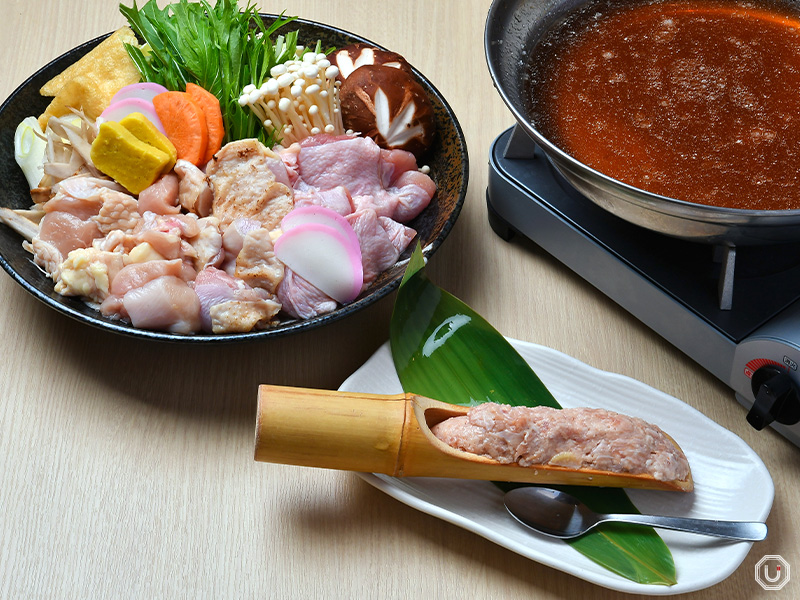
Yokozuna Chicken Chanko (photo shows 2 servings) at Hananomai Edo Tokyo
Origin of the name chanko nabe
The origin of the name chanko nabe has several theories, with the most prominent suggesting it combines chan (father) and ko (child), symbolizing the bond between parent and child.
Other theories propose that it derives from ojichan, an affectionate term for “uncle” referring to the senior disciples who cooked the dish, or from chankō, a Nagasaki-style iron Chinese pot. While the exact origin remains unclear, all theories share a warm connotation, reflecting the camaraderie and mentorship within the sumo community.
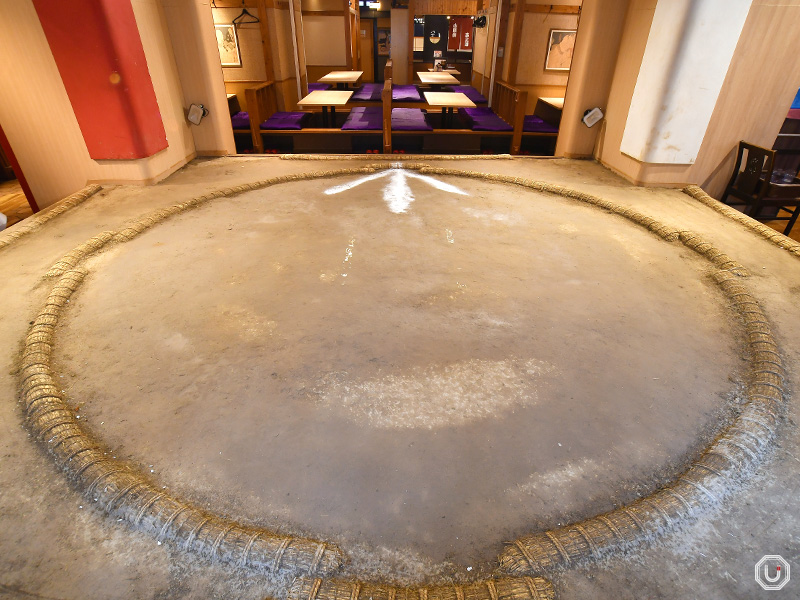
Authentic sumo ring inside Hananomai Edo Tokyo
Chanko nabe in modern times
Today, chanko nabe is cherished not only within the sumo world but also by the general public. In Tokyo’s Ryogoku area, numerous chanko specialty restaurants, many operated by former sumo wrestlers, thrive.
For tourists, chanko nabe offers a unique opportunity to experience Japanese traditional and culinary culture simultaneously, making it highly popular.
Deep historical ties between chanko nabe and sumo
Understanding the relationship between chanko nabe and sumo requires knowledge of sumo’s history.
Sumo is one of Japan’s oldest martial arts. According to the Japan Sumo Association’s website, its origins are recorded in ancient texts like the Kojiki and Nihon Shoki. During the Nara and Heian periods, sumo was part of court ceremonies called sumo sekai, held for about 400 years, deeply rooting it in Japanese culture. In the Edo period, kanjin sumo, the precursor to modern professional sumo, emerged. By 1909, the Ryōgoku Kokugikan was built in Tokyo, establishing it as the center of sumo culture, and the sumo stable system formalized, with wrestlers living communally.
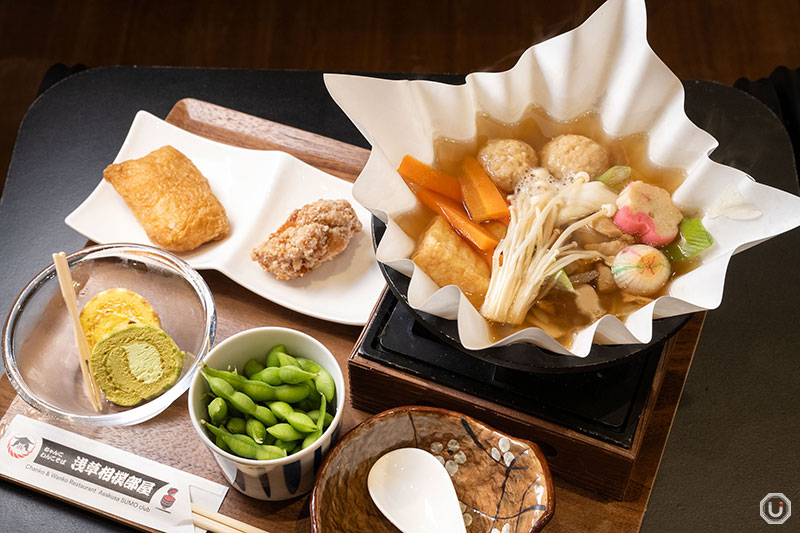
Chanko nabe set at Asakusa Sumo Club
Birth of chanko nabe in the Meiji era
Chanko nabe was developed in the Meiji era, with its roots in the Dewanoumi stable under the 19th yokozuna, Hitachiyama.
At the time, sumo’s growing popularity, coupled with yokozuna Hitachiyama’s fame, led to a surge in new recruits at the Dewanoumi stable. This made individual meal preparation impractical. Thus, the current style of chanko nabe—where a large group gathers around a single pot—was devised. For wrestlers aiming to build strong, large bodies, a nutrient-rich dish that could be quickly prepared and consumed in large quantities was essential. The hot pot, filled with fish, meat, and vegetables, was perfectly suited for sumo stables, eventually spreading to other stables.
Cultural significance of meals in sumo
In the sumo world, meals are more than just sustenance. The time spent around a chanko nabe pot is a vital opportunity for communication among the stable master, senior, and junior wrestlers.
Conversations about training, encouragement, and sumo teachings naturally flourish, making it a key moment for passing down the spirit of sumo.
Evolution from postwar to modern times
During the postwar recovery, chanko nabe spread beyond sumo to the general public. From the 1960s, former wrestlers opened chanko restaurants in Ryogoku, attracting sumo fans and tourists. Today, it enjoys international recognition as a dish that allows visitors to experience Japanese culture. In Asakusa, restaurants even offer sumo shows alongside chanko nabe, and as sumo globalizes, chanko nabe has become a celebrated Japanese dish worldwide.
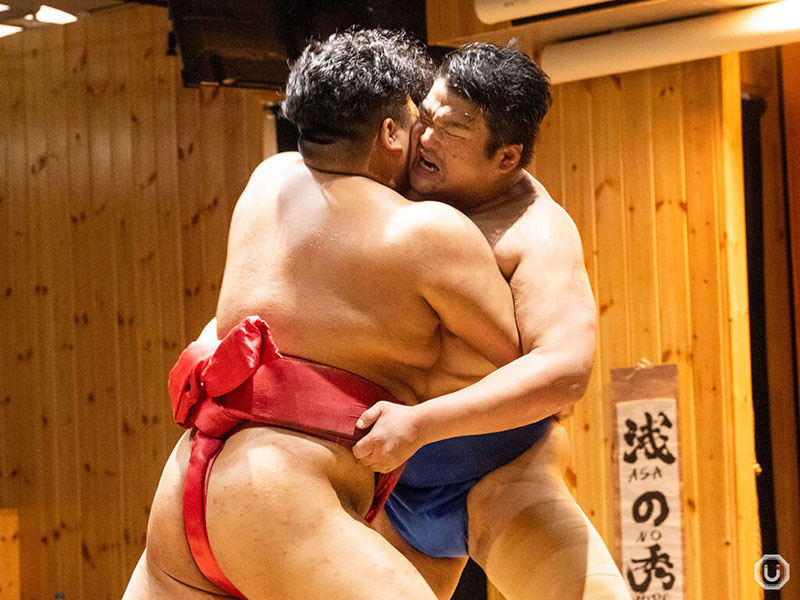
Sumo show at Asakusa Sumo Club
Ingredients and preparation of chanko nabe
The defining feature of chanko nabe is its diverse ingredients and balanced nutrition. Traditionally, it was designed to provide sumo wrestlers with essential proteins, vitamins, and minerals. Today, ingredient choices have expanded, allowing for seasonal and preference-based variations.
The core components of chanko nabe are broth, meat, seafood, vegetables, and a final carbohydrate course. Cooking everything in one pot allows the flavors to meld, creating a rich, satisfying taste.
Selecting traditional ingredients

Photo for illustrative purposes
In the past, chanko nabe centered on fish and chicken, avoiding four-legged animals like beef or pork.
This was due to a sumo superstition that eating four-legged animals, associated with “touching the ground” (a loss in sumo), would bring bad luck. Today, however, beef and pork are commonly used. Traditional ingredients include chicken (breast, thigh, or wings), fish-based tsumire (minced fish balls), and vegetables like napa cabbage, green onions, burdock, daikon, and carrots.
Broth and soup preparation
The secret to chanko nabe’s flavor lies in its carefully crafted broth. Specialty restaurants simmer chicken bones for over eight hours to create a rich, golden broth.
At home, using store-bought chicken broth base with added kombu (kelp) or dried sardines can replicate an authentic taste.
The seasoning is typically salt-based, with soy sauce or miso for adjustments. This simple approach maximizes ingredient flavors, ensuring a deep, satisfying taste throughout the meal.
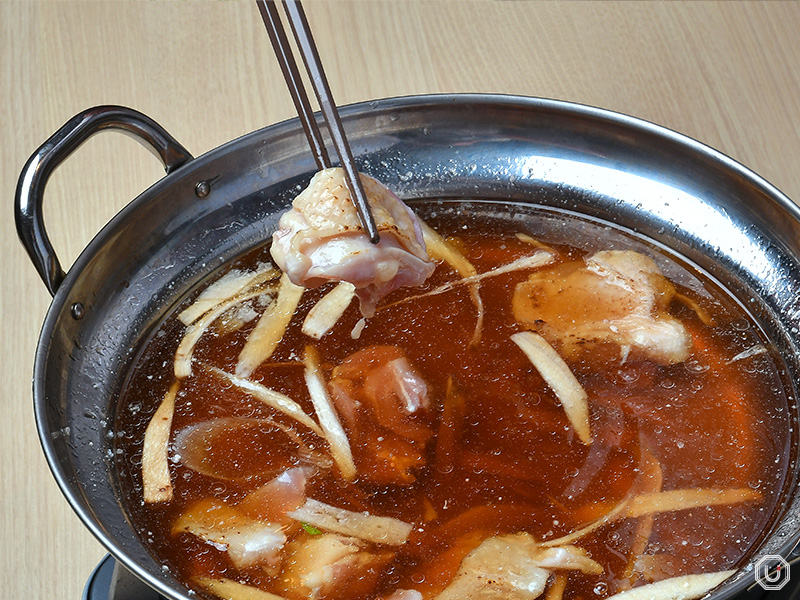
Broth of Yokozuna Chicken Chanko at Hananomai Edo Tokyo
Importance and preparation of tsumire
In chanko nabe, tsumire holds a special significance beyond being a mere ingredient. In sumo culture, it’s considered a lucky food, symbolizing “seizing victory.” Handmade tsumire is a defining element of a stable or restaurant’s flavor.
Tsumire is made from minced fresh fish like sardines or mackerel, offering a soft texture and concentrated umami. At home, mix fish paste with egg whites, potato starch, and seasonings, then spoon bite-sized portions into the pot.
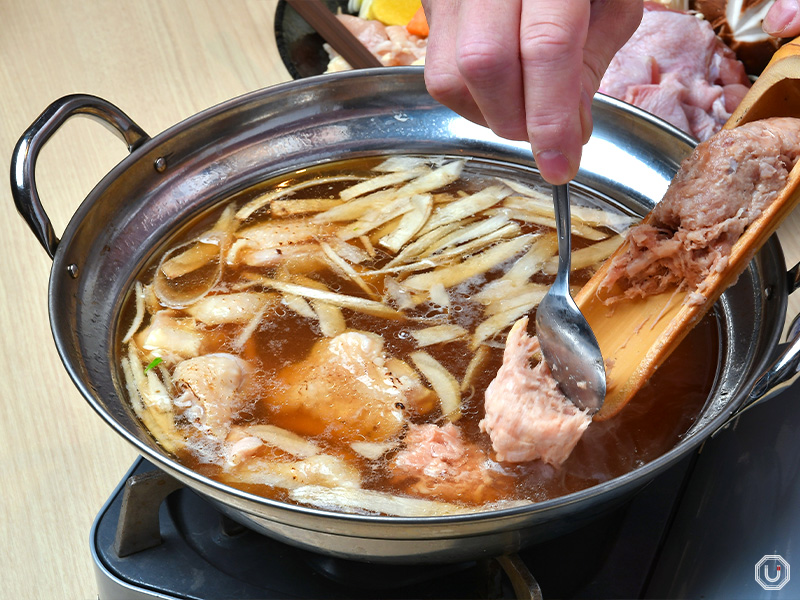
Tsumire in Yokozuna Chicken Chanko at Hananomai Edo Tokyo
Proper way to eat chanko nabe and etiquette
Knowing the correct way to eat chanko nabe is key to enjoying it fully.
Its unique eating style, distinct from other hot pot dishes, enhances satisfaction. As a dish rooted in sumo culture, specific etiquette and practices carry special meaning.
The most critical aspect of eating chanko nabe is the order of adding ingredients and controlling the heat. Hard vegetables are added first, while meat and seafood are cooked carefully to avoid overcooking, ensuring all ingredients are enjoyed at their best.
Order of adding ingredients and cooking tips
Start by adding root vegetables like daikon radish and burdock, cooking them thoroughly.
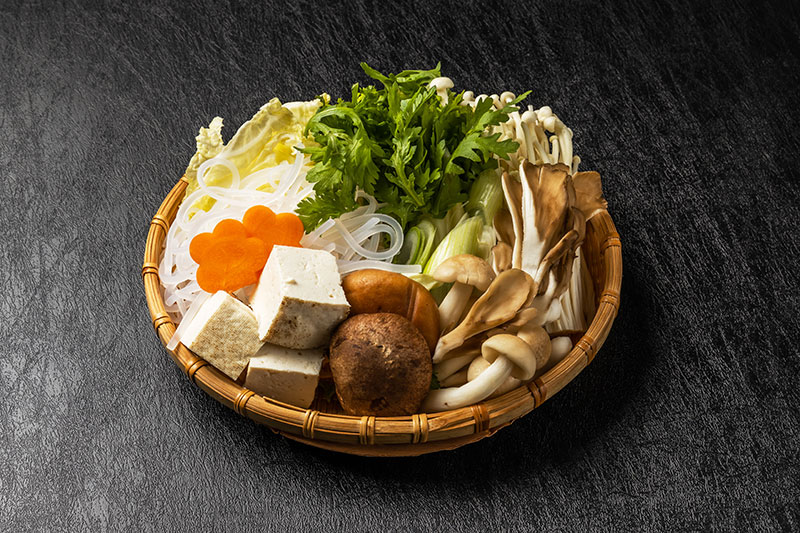
Vegetables (photo for illustrative purposes)
Next, add leafy vegetables like napa cabbage or cabbage until slightly wilted, then introduce meat. Chicken cooks faster, so add it after beef or pork. Finally, add tsumire or seafood, eating once cooked through.
Heat management involves bringing the pot to a boil on high, then simmering on medium. Over-boiling can cause tsumire to break apart or meat to toughen. Skim foam regularly to keep the broth clear and delicious.
Serving and eating progression
Chanko nabe is typically served by taking portions from a shared pot. When serving, consider others by avoiding taking too much of any one ingredient, especially popular ones like tsumire.
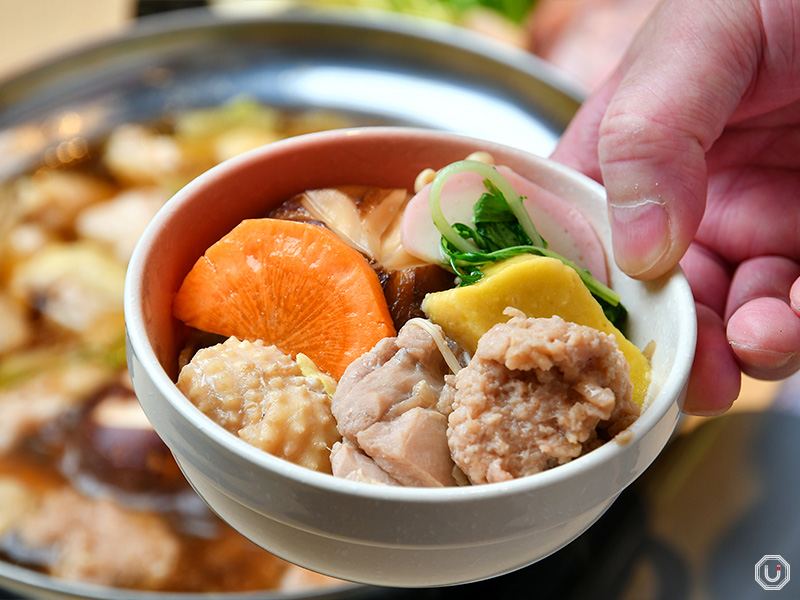
Yokozuna Chicken Chanko served in a bowl at Hananomai Edo Tokyo
Part of the enjoyment is the evolving flavor of the broth as ingredients release their umami over time.
The broth deepens as you eat, and adding more ingredients or adjusting seasonings keeps the meal engaging until the end.
Enjoying the final course
One of chanko nabe’s highlights is the final course. After finishing the ingredients, the umami-rich broth is used to cook rice for zōsui (rice porridge) or udon noodles.
For zosui, check the broth’s flavor before adding rice, adjusting with seasonings if needed. Stir in beaten eggs and sprinkle with green onions for a nutritious, satisfying finish. This final dish epitomizes chanko nabe’s true deliciousness.
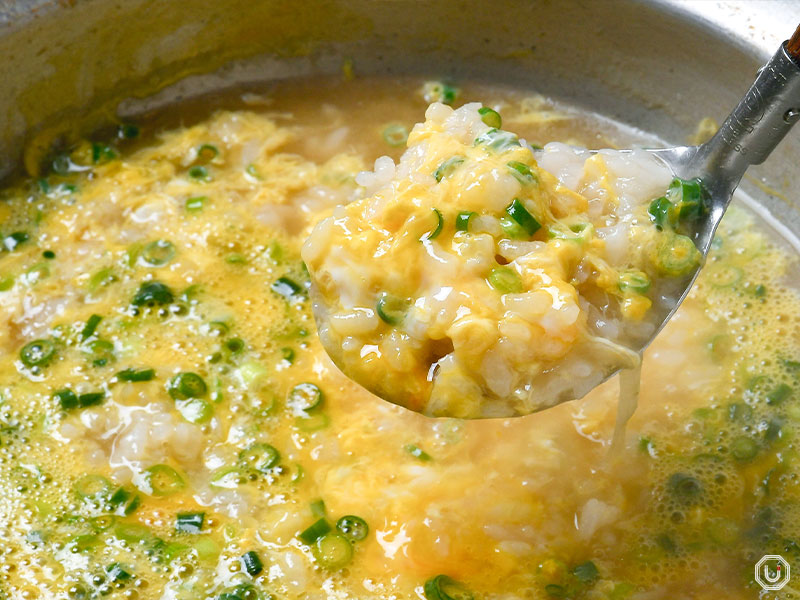
Zosui made from Shoyu Chankoat Ryotei Tokibayama
Health benefits and nutritional value of chanko nabe
Chanko nabe is not only delicious but also recognized as a healthy dish with excellent nutritional balance. Designed to support sumo wrestlers’ physiques, it’s rich in high-quality proteins, vitamins, and minerals, aligning with modern health-conscious diets.
Its ability to provide diverse nutrients in one pot makes it ideal for those seeking balanced nutrition or efficient sustenance. As a warm dish, it also promotes metabolism, aiding in winter health maintenance.
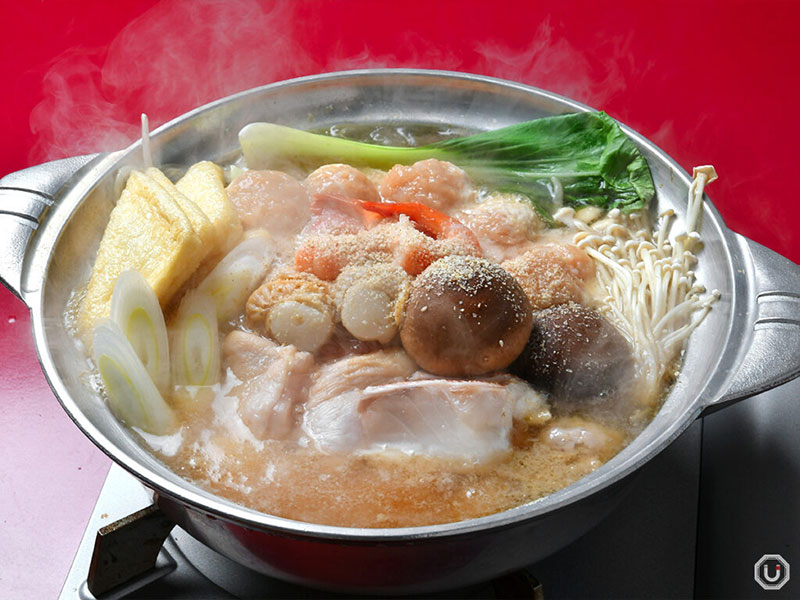
Chanko pot -Taste of Kirishima- (photo shows 2 servings) at Chanko Kirishima Ryogoku Main Branch
Summary
Chanko nabe is a traditional, nutrient-rich dish born from Japan’s sumo culture, embodying the wisdom behind wrestlers’ physical conditioning. Developed in the Meiji era by the 19th yokozuna, Hitachiyama, it has been passed down with unique flavors in each sumo stable and is now beloved by the general public.
Tokyo’s Ryogoku area boasts many chanko specialty restaurants, often run by former wrestlers, where you can experience authentic flavors and sumo culture. With its diverse ingredients and balanced nutrition, chanko nabe offers both deliciousness and health benefits, appealing to people worldwide.
Understanding the proper eating methods and etiquette enhances the enjoyment of chanko nabe and deepens appreciation for Japanese culture. As a fusion of sumo spirit and culinary tradition, chanko nabe is truly one of Japan’s proud cultural treasures.
